Disclaimer: I do not question the value that a human illustrator contributes to his/her original work. An illustrator brings feeling, heart, brain and a lifetime of experiences and sensations to the work they produce. I am forever grateful to the many illustrators whose fantastic work has made newspapers and magazines I have redesigned so much richer visually. My hat is off to all of them. RESPECT.
Currently I hear from many of these same illustrators as they learn that I have completed a book about artificial intelligence for content creators which, by the way, is illustrated entirely with AI-assisted images. They are afraid that the robots are going to take their jobs away. I’ve recently fielded questions by email and in workshops such as:
- “How can you trust a robot with your main visual element that will be responsible for bringing readers into a piece?”
- “If publishers who are trying to cut corners become aware that an AI program can provide illustrations, why would they hire an illustrator?”
These are legitimate questions that need answers; real concerns that anyone introducing artificial intelligence in the newsroom must address, and, definitely, include in AI guidelines that are also now a must for everyone in content creation.
At present, everyone needs to come up with answers to these questions. At a minimum, an honest discussion of these important issues should have started already.
The Hollywood writers and AI
Recently, when Hollywood’s writers went on strike, AI emerged as a key point of contention between the writers and studios. Though text-based generative AI tools like ChatGPT are very creatively limited as they stand, writers are worried that studios would still try to take advantage of these fast-developing tools to avoid paying union members. The writers scored a major victory in the battle over artificial intelligence with a new contract featuring strong guardrails in how the technology can be used on film and television projects.
The key word here is “guardrails,” which should be part of the guidelines that every newsroom organization should already have in place. Here is how The New York Times summarized the agreement between the writers and the studios:
“In this case, the parties agreed that A.I. is not a writer. The studios cannot use A.I. in place of a credited and paid guild member. Studios can rely on A.I. to generate a first draft, but the writers to whom they deliver it get the credit. .
The New York Times
30 September 2023
In addition:
Under the new terms, studios cannot use AI to write scripts or to edit scripts that have already been written by a writer. The contract also prevents studios from treating AI-generated content as “source material”, like a novel or a stage play, that screenwriters could be assigned to adapt for a lower fee and less credit than a fully original script.
That is a huge and well-deserved triumph for writers and their enormous contributions.
We don’t have such specific definitions for the work of illustrators – at least not yet, but we should soon.
This is a discussion that needs to take place. It is unlikely that the world’s illustrators will strike, but their voices need to be heard, nonetheless.
My experiment
In order to provide some specifics for a discussion that I hope will take place in newsrooms everywhere, as well as in classrooms where artists and journalists are trained, I have put myself in the shoes of a publisher or editor anywhere on the planet.
It all started for me when I read the Wall Street Journal’s weekly column by Peggy Noonan, which is often accompanied by an illustration. This week she writes about the way some members of Congress misbehave, leading to physical altercations and what she describes as behavior that “…makes our leaders look second rate and insubstantial.”
Here is the illustration by Chad Crowe that accompanied the WSJ column:

It is fun, conveys the content of the Noonan column, and definitely pulls the reader’s eye to the text and, hopefully, returns readers to read the story. This is the way we have always used illustrations for opinion pieces. The writer writes the text, the section editor reads it and the art director or visual journalist assigns an illustrator – sometimes from the staff, often a freelancer – to execute the illustration.
I know that many times the illustrator has not read the entire text of the story before they get the assignment. The “prompt” from the assigning editor can be brief and could be something like: “this is a column about the misbehavior of members of Congress, who seem to be going at each other physically.” In a perfect situation, the illustrator begins their work once the text is complete, or almost complete.
Enter the robots
Because I am a student of artificial intelligence, and one who explains AI to students and fellow journalists/designers in teaching situations, I am constantly anticipating the next question I might get in one of my workshops.
I decided to take elements of the Noonan column and prompt Midjourney, a program I use to create visuals, to see what it would provide. The prompt is the key, so my first prompt emphasized “serious newspaper:”
Prompt # 1:
Illustration for a serious newspaper, the topic is the bad behavior of US politicians in Congress. The crisis of comportment on Capitol Hill is getting worse. One politician punches the ohter on in the ribs, another one offers to fight someone during a hearing . The behavior is one of pulling each other’s hair out instead of discussing things in a civilized way.Two months ago it was an argument over whether senators should be allowed to wear children’s play clothes on the floor, because one senator felt this was emotionally necessary for him. His emotions were overridden and the old dress code restored. Now it is how members feel free to act in public. If you follow the news you’re familiar with most or all of the instances. –
In a matter of seconds, I received these four illustrations:

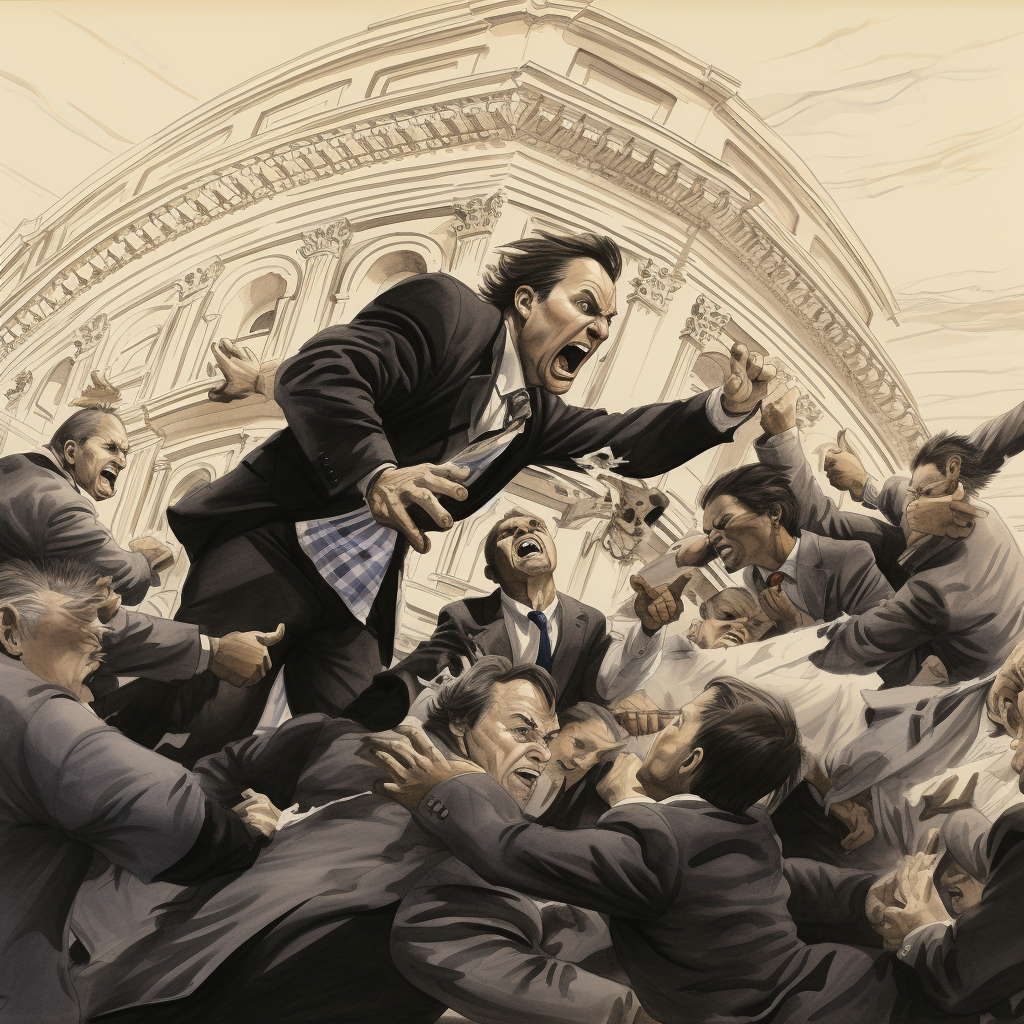

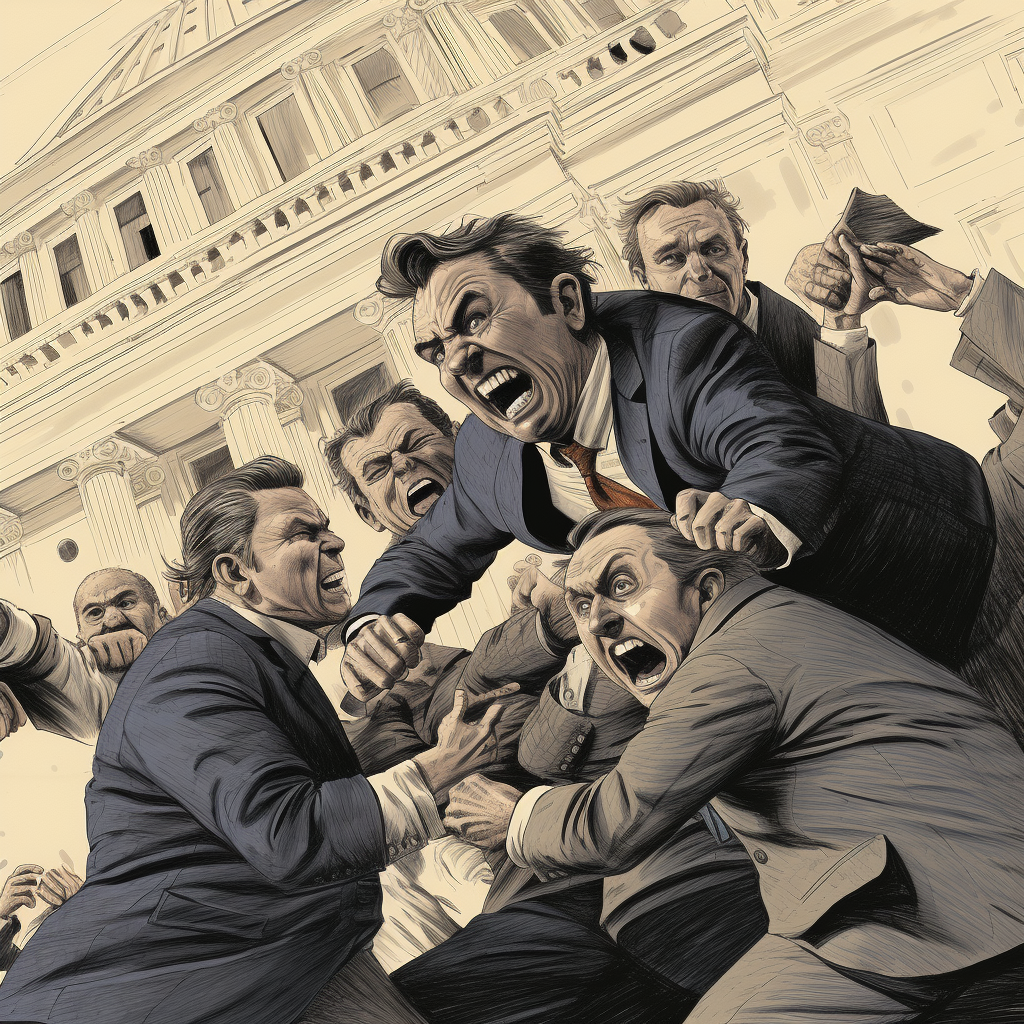
Prompt #2
Here I prompted Midjourney to give me a cartoon style illustration:
Illustration for a newspaper, the topic is the bad behavior of US politicians in Congress. They are pulling each other’s hair out. Make it CARTOON style, colors. The crisis of comportment on Capitol Hill is getting worse. One politician punches the ohter on in the ribs, another one offers to fight someone during a hearing . The behavior is one of pulling each other’s hair out instead of discussing things in a civilized way.Two months ago it was an argument over whether senators should be allowed to wear children’s play clothes on the floor, because one senator felt this was emotionally necessary for him. His emotions were overridden and the old dress code restored. Now it is how members feel free to act in public. If you follow the news you’re familiar with most or all of the instances.
And in a matter of seconds, these four illustrations were delivered:
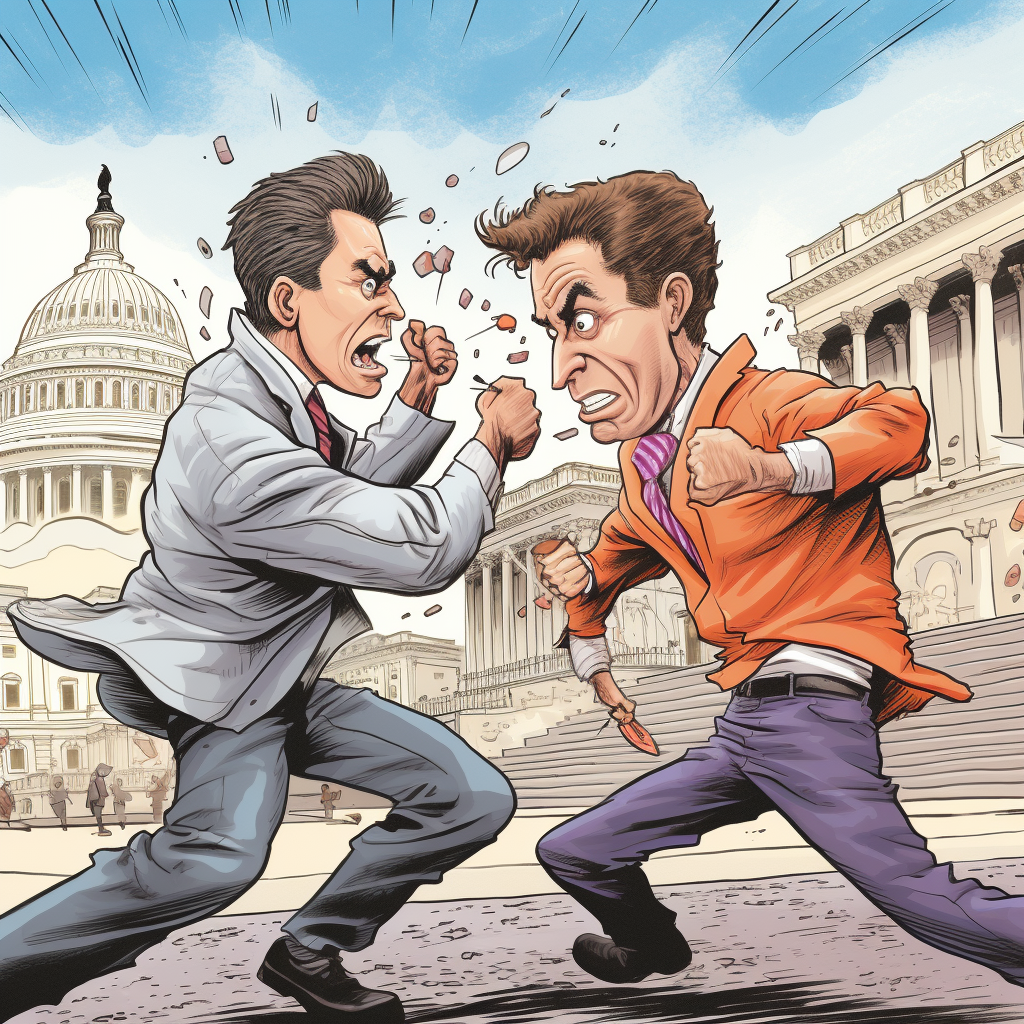
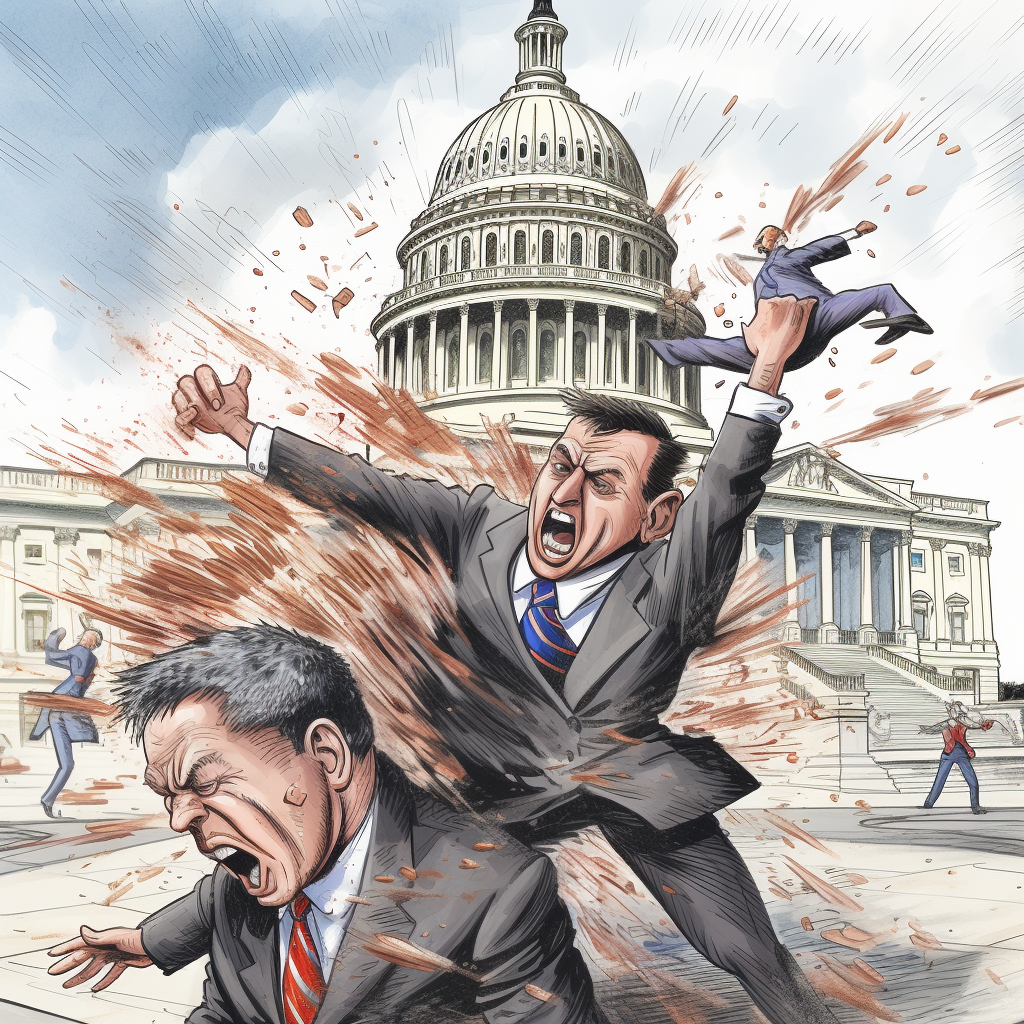

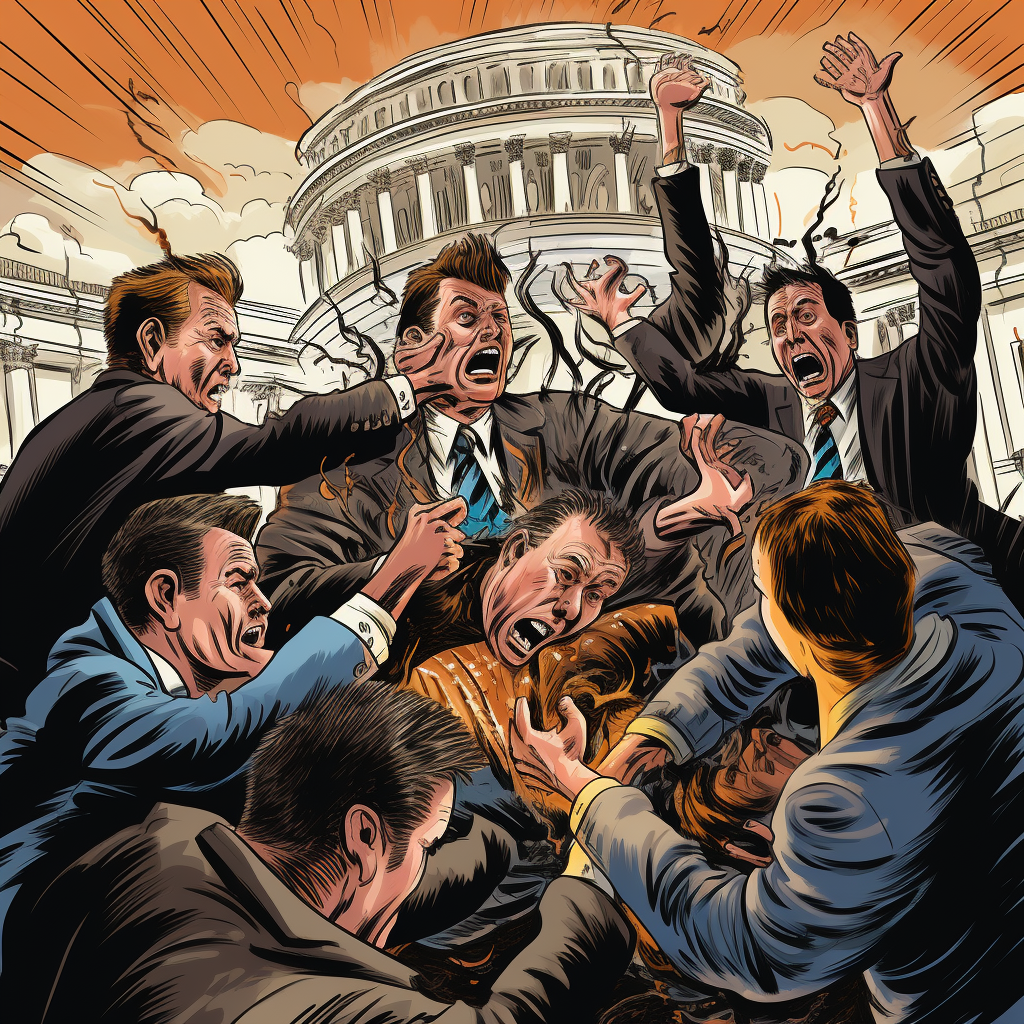
What do you think?
I hope that these visuals can take the much-needed discussion from the abstract to the specific.
In my view, the illustration by Chad Crowe is the best choice. It is original, funny and, most importantly, it carries the Crowe style, whatever it is. Illustrators, like all artists, develop styles, brought about by who they are, their life experiences, training, influences, and yes, their hearts, souls, and brains – all working in unison.
The illustrations we see here created by Midjourney are acceptable, of course. Many would consider them ready to be published. If there is a certain flatness to any of them, it is because the “inspiration” that created them, if we can call it that, represents a kaleidoscope of styles, with nothing unique added. If three newspapers and magazines had an article on the same topic, chances are that they could end up with very similar versions.
But this could also happen in the human-to-human publishing world, as we see here, where two magazines selected the same photo for their cover. It happens!

Start the discussion, try to be as objective as possible. Hopefully, such dialog will lead to guidelines for how your newsroom or organization will approach the utilization of AI. By the way, notice that all the people in the AI illustrations happen to be white men–no women, no people of color–demonstrating a certain bias.
This is a delicate dance, indeed, as we analyze the role that humans and robots are going to have moving forward, and not just in the world of publishing.
Pre-order my new AI book here
https://thaneandprose.com/…/preorder-ai-what-to-expect…
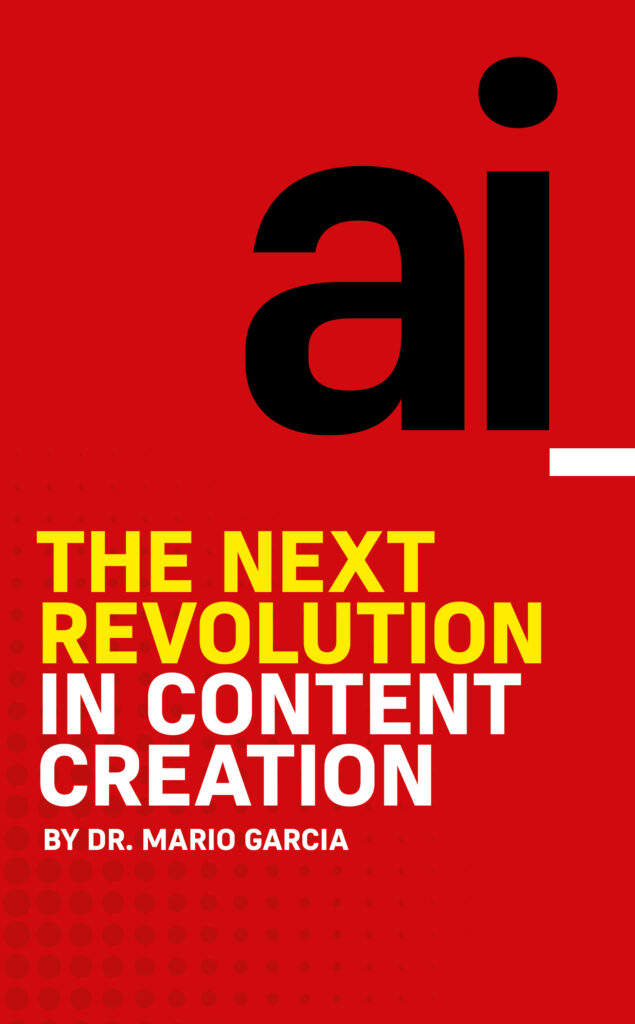
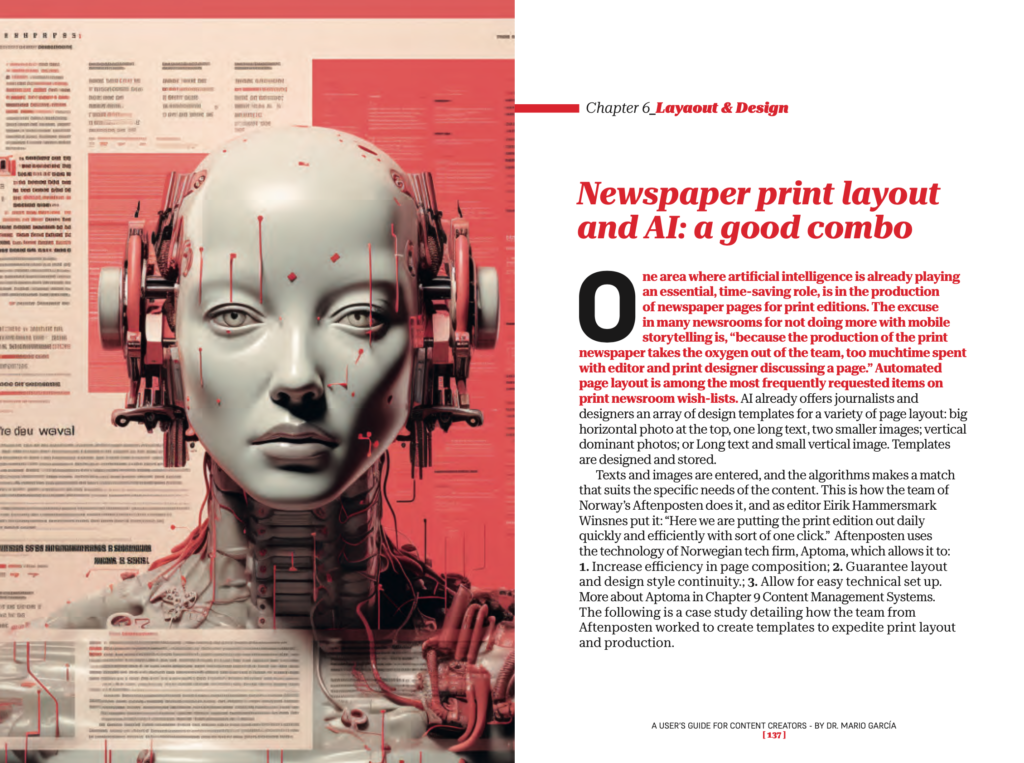

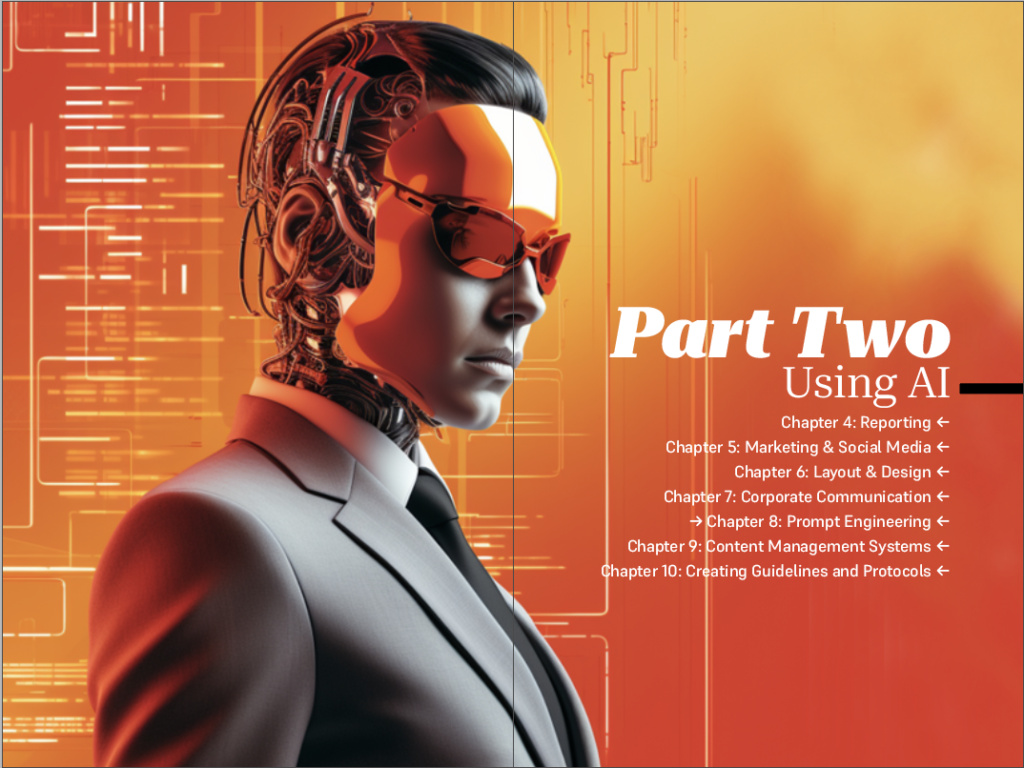
Here is a chance to pre-order my new book about Artificial Intelligence and content creation. The first 25 copies sold will be signed! Order here:
https://thaneandprose.com/…/preorder-ai-what-to-expect…
Pre-publication reviews!

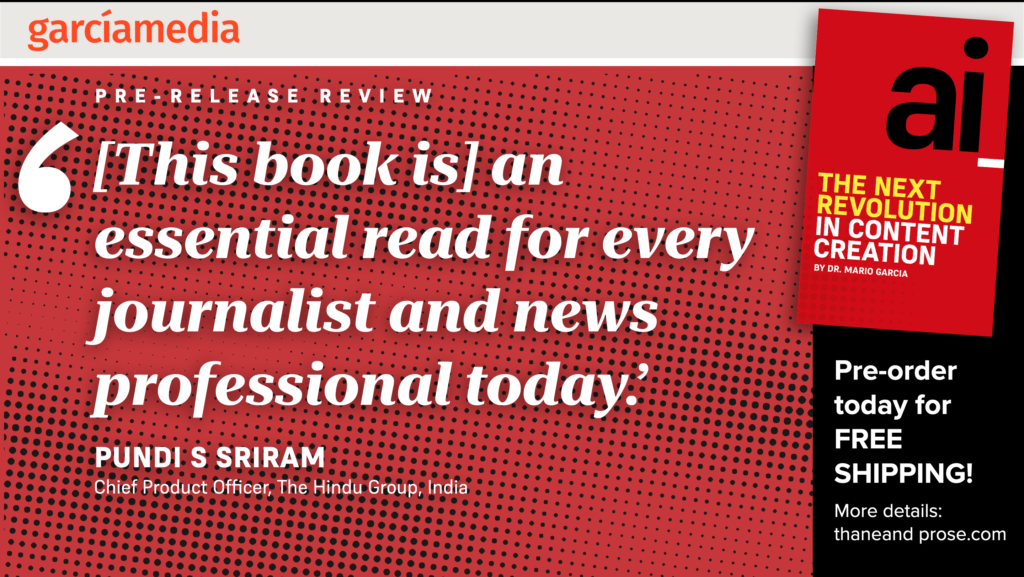
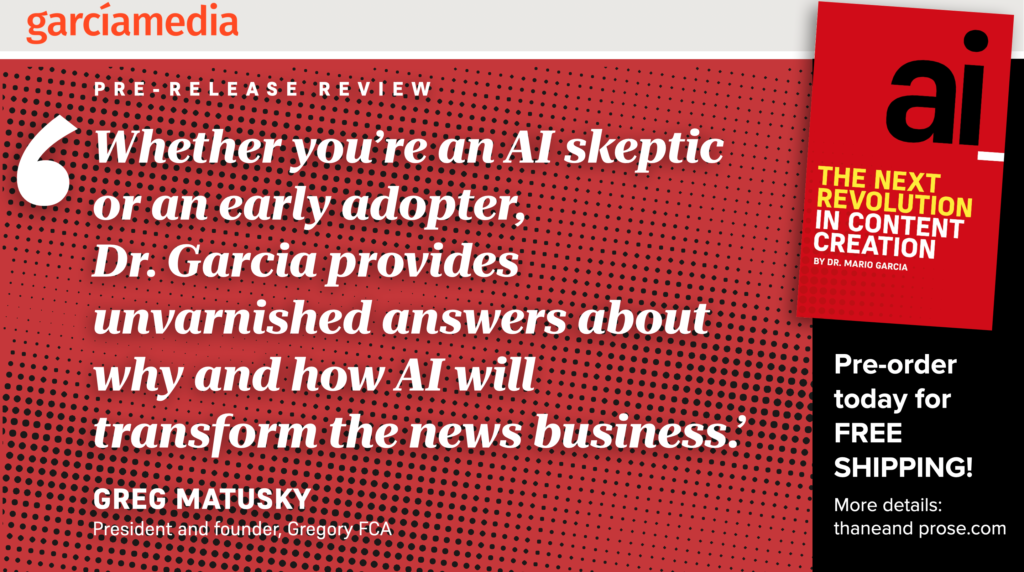

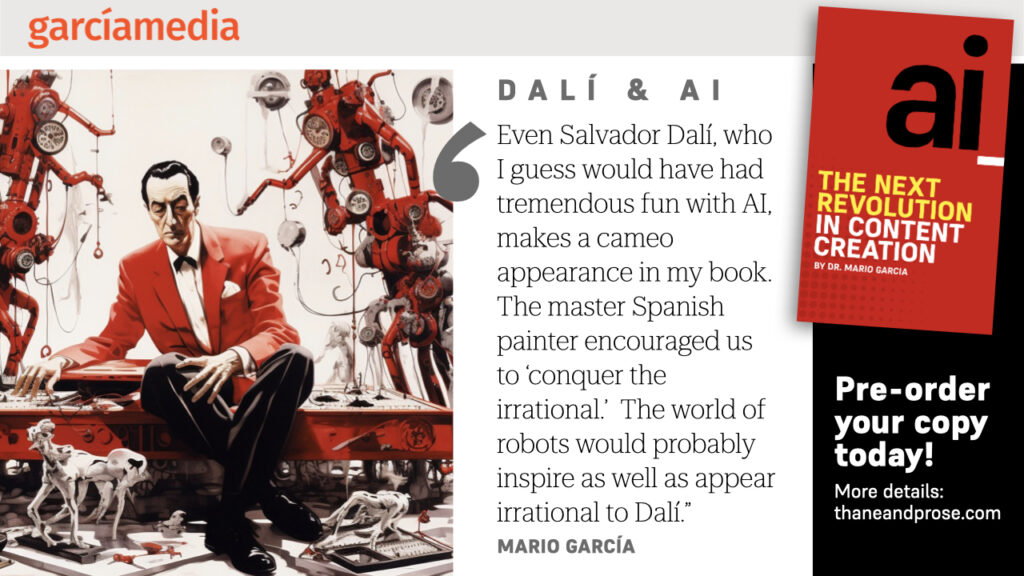
AI front and center
As I put finishing touches on the manuscript of my new book, AI: The Next Revolution for Content Creation, I am aware that the number of AI-related headlines that appear in my mailbox daily is on the increase, frustrating the author of a book that must have a date of completion, and realizing that in today’s fast paced technological advance environment, books must have websites created for updates.
For more about my new AI book, go here:
Of related interest
https://newspaperdesign.in/ai-is-the-next-big-media-revolutionmario-garcia/
Newsrooms around the planet have gone mobile-first after a Garcia Media workshop!
Our Garcia Media Mobile Storytelling workshops are proven to introduce your editorial team to the way we write, edit and design for mobile platforms. It is a one-day program that involves a presentation (where I summarize my Columbia University class content), and follow it with a hands on workshop.
Did you read The Story yet?
I urge you to consult my latest book, The Story, a trilogy full of tips and explanations about mobile storytelling, which represents the latest genre for journalists to explore. See information below:
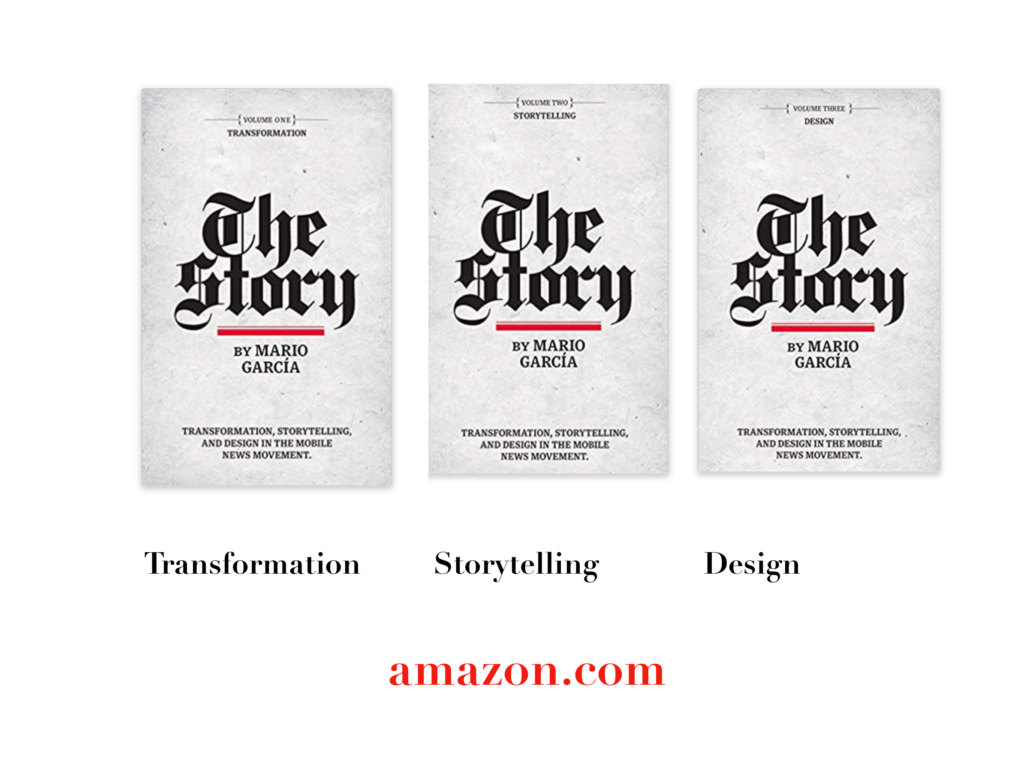
The full trilogy of The Story now available–3 books to guide you through a mobile first strategy. Whether you’re a reporter, editor, designer, publisher, corporate communicator, The Story is for you! https://amazon
Volume 1: Transformation
https://books.apple.com/us/book/the-story-volume-i/id1480169411
Volume Two: Storytelling
https://books.apple.com/us/book/the-story-volume-ii/id1484581220
Volume Three: Design
https://books.apple.com/us/book/the-story-volume-iii/id1497049918
Order the print edition of The Story, from Amazon, here:
The Story, en español:
TheMarioBlog post #3381